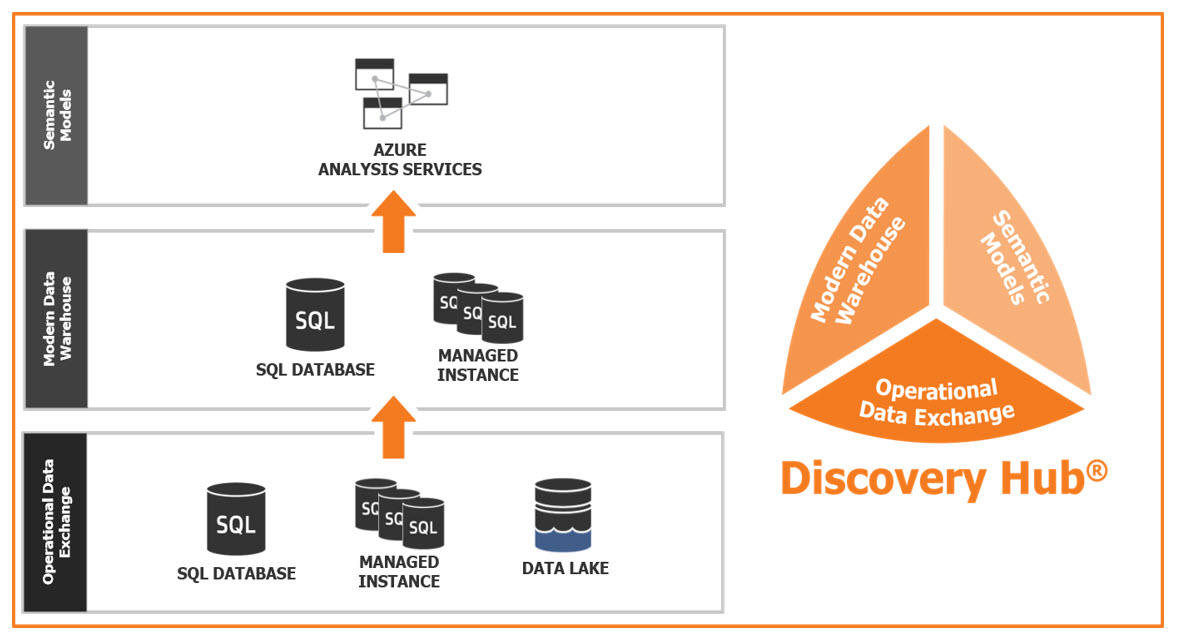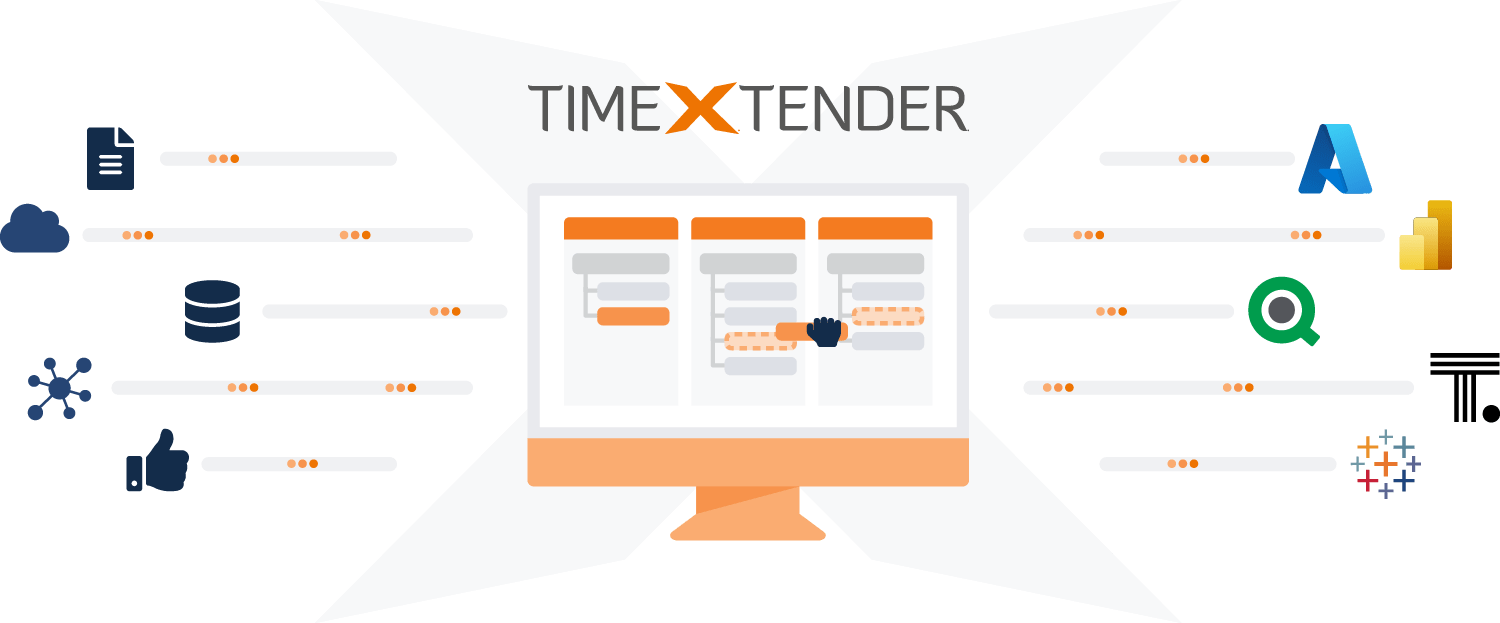
TimeXtender can be deployed either in the Cloud using Azure PaaS Database technology or on-premises using SQL Server. If you have questions about configuring the environment, visit here to learn more about requirements and options.
TimeXtender recommends running both Discovery Hub and your data storage platform(s) in the Azure cloud – which provides several benefits to your organization.
- Because Time Matters: When deploying an Azure Marketplace Template your analytics environment can be ready in as little as 30 minutes.
- Improved Performance: All Azure services are managed and configured for optimal performance, as well as active geo-replication ensure near 100% uptime.
- Security: Azure enforces the strictest data security standards such as Transport Security Layer (TLS) and transparent data encryption.
- Reduced Cost: By leveraging Azure's data centers you don't need to pay for hardware or expensive DBA's to maintain your infrastructure.
To deploy Discovery Hub in the cloud you need to choose and deploy an Azure Marketplace Template. We offer a how-to guide on our support portal to help you deploy faster.
Discovery Hub supports multiple deployment targets in Azure for your chosen data architecture, enabling many different possible configurations of the platform. The below diagram provides an overview of the recommended data architecture and supported data storage platforms.

To configure Discovery Hub in Azure, determine your preferred data architecture and decide which data storage options you desire for each layer, then select the appropriate Azure Marketplace template from the list below. Below are some suggested use cases for each storage option, however, we highly recommend you consult your TimeXtender partner to help you select the options that will best fit your needs.
- Azure Synapse Analytics – Consider this option for data warehouse workloads utilizing billion row tables and requiring more than several terabytes of storage.
- Azure SQL Single Database -- Consider Azure SQL Single Database if you plan to consolidate the ODX and MDW layers into a single database as this option DOES NOT support cross-database queries.
- Azure SQL Managed Instance -- Consider Azure SQL Managed Instance if you plan to split the Operational Data Exchange (ODX) and Modern Data Warehouse (MDW) layers into multiple databases. This is also an ideal option if you plan to migrate an existing on-premises solution into Azure.
- Azure Data Lake -- Consider Azure Data Lake as a storage for the ODX if you plan to store massive amounts of data for big data & AI applications.
- Azure Analysis Services -- You may want to consider Azure Analysis Services if you plan to use Power BI across your organization and/or other applications such as Excel to analyze large amounts of data at once.
Not ready to deploy to the cloud? No problem. Discovery Hub supports on-premises deployment as well. If you’re not quite ready for a move to the cloud, you can Configure & Deploy On-Premises.



